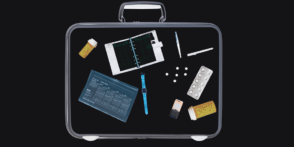Building Inclusion and Equity
Agencies assess programs to improve their diversity, equity and inclusion efforts
Following the tragic events of 2020, organizations and entities in the public and private sectors are re-evaluating how they handle race relations within their companies and agencies. For some in the transportation sphere, improving on diversity, equity and inclusion (DEI) has been an ongoing project for years, while others are just joining in on the conversation. Most begin with a focus on understanding what DEI is and why it’s important.
Training Industry, the leading source for information on the business of learning and development, defines DEI as “a term used to describe programs and policies that encourage representation and participation of diverse groups of people, including people of different genders, races and ethnicities, abilities and disabilities, religions, cultures, ages and sexual orientations, and people with diverse backgrounds, experiences, skills and expertise.” Motor vehicle administrators are working to fully understand, consider and cater to the numerous peoples and communities they serve and are striving to make sure their employees mirror the diverse public.
“You can have a diverse environment, and you can have measures that improve accessibility and equality. But if folks don’t feel like they belong to the team, all that, frankly, doesn’t matter, right?” says Kathleen Webb, former chief deputy director of the California Department of Motor Vehicles (DMV). “You need to feel like your voice matters, like your voice will be heard and like you have a place to exercise your voice.”
Learning How to Have Difficult Conversations
The first step to creating more diverse, equitable and inclusive environments, Webb says, is teaching people to recognize their own conscious or unconscious biases and how they may influence decision making.
About five years ago, the California DMV partnered with the Government Alliance on Race and Equity (GARE) to develop a Racial Equity Action Plan. “We really dove deep into our departments and brought in a diversity of staff to be part of shaping the Racial Equity Action Plan,” Webb explains. “It also allowed for a conversation to happen that usually is not a comfortable conversation for most people.”
Learning how to facilitate complex conversations around things like race, prejudice and bias was essential to making change happen in California. “The key thing is when you get into these conversations that are personal, to not let it become so personal that you can’t move forward and find some solutions,” Webb says. “For people who are not discriminated against, or people who are not of color, it’s hard for somebody else to decide how to fix the problem if you’re not talking with people who are actually being impacted by current policy.”
These difficult conversations are ones that American Association of Motor Vehicle Administrators (AAMVA) President and CEO Anne Ferro hopes AAMVA is having with its own employees. “First, we can start to sensitize ourselves to our own internal biases or unintentional biases. Then, we can challenge ourselves as to what it means to go beyond being diverse, but also being inclusive and equitable, and to identify practices we can instill,” she says.
For jurisdiction members, AAMVA’s practice of facilitating working groups and roundtable discussions offers a forum for agency leaders and personnel to share best practices, findings and issues, so they can learn from one another about how DEI audits, process changes and policy reviews are introduced and implemented, for example.
The Pennsylvania Department of Transportation’s (PennDOT’s) policy director, Natasha Fackler, says her jurisdiction has had all employees go through diversity training in recent years. This past summer, the department released its first Dismantling Systemic Racism and Inequities Working Group report. The purpose of the report was for staff from across the agency to be “charged with assessing PennDOT’s diversity and inclusion efforts, better understanding structural racism in transportation generally, and evaluating programs and initiatives that could help with these issues.” PennDOT is now looking to implement new ways to do DEI training for its workforce.
“We’re looking at trainings for things like unconscious bias and microaggressions. We are starting to set up small group discussions for the agency that allow for candid conversations on these topics,” Fackler says. “We’re also in the process of setting up a Diversity, Equity and Inclusion Council to allow individuals within the agency to participate in culture-building activities and discussions related to this. And we’re in the process of hiring a director of equitable transportation to help guide the agency in all of our work.”
Recruitment and Retention
In 2019, Wisconsin Governor Tony Eavers signed Executive Order 59, which required each state agency to develop an equity and inclusion action plan that would “comply with equal employment opportunity and affirmative action requirements, build an infrastructure and culture committed to equity and inclusion, and incorporate equity and inclusion through the agency’s work and public service.” Rodney Saunders Jr. holds the position of Agency Equity and Inclusion Program Policy Advisor at the Wisconsin Department of Transportation (WisDOT), and his duty is to oversee the execution and implementation of the agency’s plan, which began on Jan. 1 of this year and is set to go through June 30, 2023.
Wisconsin’s plan has about 40 goals that directly target recruitment and retention efforts. “I try to get at least one person from each division on a subcommittee to chime in with their ideas on each of the goals,” Saunders explains. “My goal is to bring the department together.”
One of the projects that Saunders and his team are currently working on is devising new ways to market job opportunities at WisDOT. Something that’s already in place is “changing the language or adding language to reflect the flexibility for religious or cultural observances in job postings,” he says. “We’re letting applicants know that we’re being transparent about what the paid time off options are upon a potential start of employment for them.”
Saunders is also excited to implement a new community engagement plan to bring aboard a younger pool of talent. “In Wisconsin state agencies, over 40% of the workforce is eligible for retirement in the next 10 years, so we really have to think beyond just the next four years of our potential workforce,” he says.
PennDOT is also reevaluating its recruitment efforts and seeking new demographics. “We have set a plan where we will be meeting with diverse sets of clubs, high schools, trade schools and colleges, including some historically Black colleges and universities, to really set up that pipeline for understanding the skill sets and education that individuals would need to have those jobs or to help us fill job gaps,” Fackler says.
“We are really looking at creating age-appropriate materials to get into our schools earlier,” she continues. “So, not just for colleges, but even elementary, middle school and high school. We want to start communicating to students earlier, to talk about careers at PennDOT and a lot of the options that we have as an agency.”
In California, Webb has introduced new hiring and promotion practices, which include having diverse hiring panels and blind scoring during candidate interviews.
“You don’t get the application, you don’t get any information on their name, age, gender, or race. All you get is a statement of qualifications that they wrote explaining why they are the best candidate for the job,” he explains.
The California DMV is also working with consulting firm Guidehouse to develop a five-year workforce plan and is considering utilizing new technology that helps companies better measure and track their DEI success metrics.
Service Delivery and Community Engagement
Each jurisdiction’s Department of Motor Vehicles or Department of Transportation impacts every citizen within the jurisdiction. The services these agencies provide must be accessible and welcoming to all who need them. Community outreach and engagement is essential, and PennDOT’s Fackler says this means the agency must meet customers where they are.
“In the past, we expected people to come to PennDOT to learn about our programs or projects,” she says. “Now, we’re trying to turn the tables and ask, how can we, PennDOT, go out and communicate to our communities in ways that are important to them at their events?”
This means visits to local fairs, festivals, faith-based events and more. Since hosting its own events virtually, PennDOT has found that eliminating the need to be in one location has resulted in more public participation.
The California DMV was already in the process of modernizing prior to the COVID-19 pandemic, and it launched a new website with more online services in July 2020. Recently, it installed service kiosks that mirror the department’s website in various popular locations around the state, like grocery stores. These machines were updated to include assistive technology to make them more inclusive, specifically for those who are blind and visually impaired. Since the state has one of the most diverse populations in the country, its DMV offers 32 languages and translation services.
Webb says that earlier this year, she was approached by leaders from a low-income community in Sacramento County about how vehicle registration expiration and the associated fees impacts their daily lives. They told her how people with expired registration tags were often stopped by the police, and how fees and fines make it more difficult for these drivers to rectify their situation.
In May of this year, AAMVA released research called Reducing Suspended Drivers and Alternative Reinstatement Best Practices, which echoes what community members shared with Webb: that suspended drivers end up getting trapped within the system.
“How do we support people not being a target for law enforcement when the only thing they haven’t done is paid their registration?” Webb questions. She says that grant dollars have allowed for the state to pay for about a dozen people’s registration in the low-income neighborhood, but that these are the kind of issues that she hopes to address moving forward.
Learn more about the update to reducing suspended drivers and alternative reinstatement best practices.




